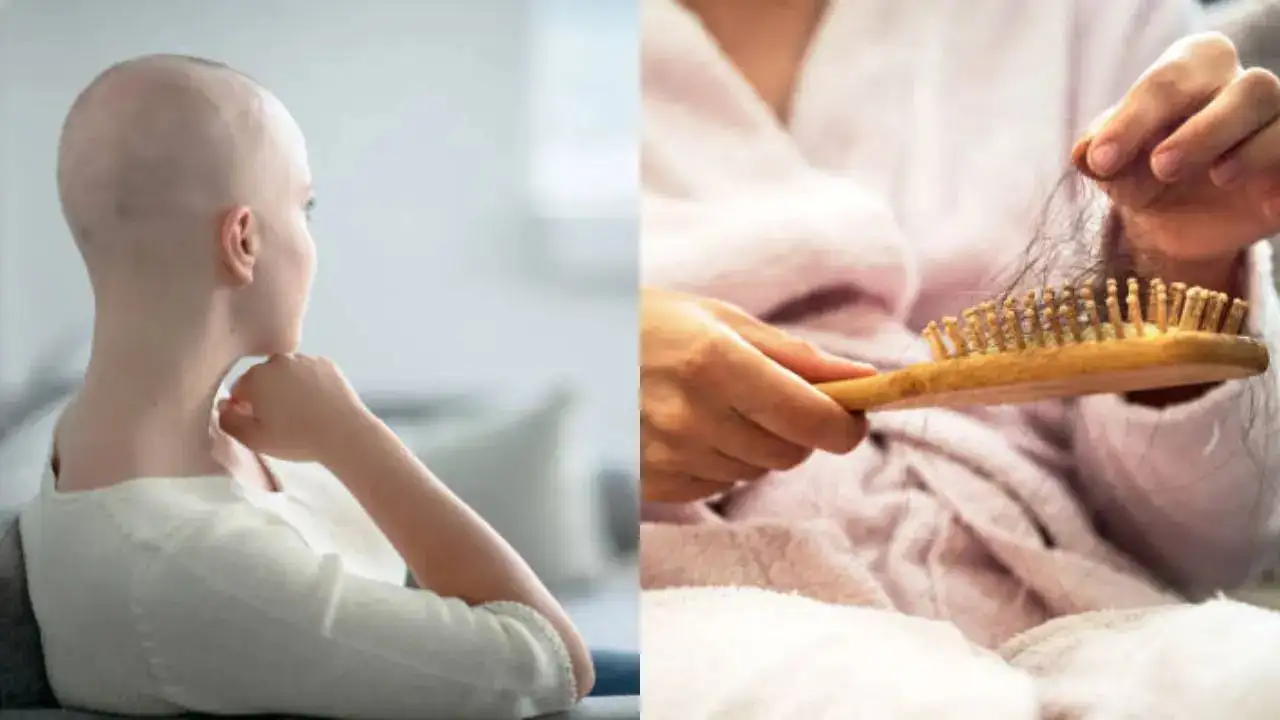
While some hair starts to regrow four to six 6 weeks after finishing treatment, it may not be for everyone
Chemotherapy is among the most effective cancer treatments but comes with many side effects. One among many is hair loss. While some hair starts to regrow four to six weeks after finishing treatment, it may not be for everyone. Many people lose some or all of their hair if they undergo chemotheAccording to experts, chemotherapy drugs target rapidly dividing cells, including cancer cells, but they can also affect healthy cells like hair follicles. As a result, many patients experience hair loss within a few weeks of starting chemotherapy.
What is chemotherapy-induced hair loss?
Hair loss that happens due to chemotherapy is known as anagen effluvium, which occurs during the anagen, or the growth phase of the hair cycle. “Chemotherapy drugs, such as anthracyclines, taxanes, and alkylating agents, are designed to destroy fast-growing cancer cells, but unfortunately, they can also impact the rapidly growing hair follicles. As a result, hair starts to shed, typically 2 to 3 weeks after the first chemotherapy treatment, and can continue for the duration of the treatment,” Dr. Viral Desai, board-certified super-specialist, cosmetic plastic and hair transplant surgeon, and medical director—DHI India, told Times Now.
According to Dr. Desai, even though it is usually temporary and the hair grows back once chemotherapy is complete, mentally it can take a toll on the patient. “The timeline for hair regrowth varies from person to person,” he added.
Most people undergoing chemotherapy may begin seeing thin, fuzzy hair a few weeks after their last treatment. While many cancer patients who undergo chemotherapy may experience longer-term hair loss, the permanent condition is extremely rare. “Full hair regrowth can take anywhere from 6 to 12 months to see their hair fully return to its pre-chemo thickness and texture,” said Dr. Desai.
A timeline that indicates what most people can expect to happen after chemotherapy includes:
- 3 to 4 weeks: Light, fuzzy hair forms
- 4 to 6 weeks: Thicker hair begins growing
- 2 to 3 months: An inch of hair may have grown
- 3 to 6 months: Some 2 to 3 inches of hair may have grown, covering bald patches. People who previously had very short hair may be able to return to their original style
- 12 months: The hair may have grown 4 to 6 inches and be long enough to brush or style
Changes in hair texture and colour
According to experts, there can be many differences when your hair grows back after chemotherapy—as it may grow thicker or finer than before and can be curlier; also, the colour can be lighter when it starts growing, but it gains its original colour over time.
Also, a few hair follicles may even enter the active growth period before others. And when that happens, the length of hair begins to vary—making the hair look patchy overall. It will likely also be more difficult to style. However, over time, the hair settles into a more regular growth pattern. However, its texture might be different than before the treatment.
Hair growth post immunotherapy
Immunotherapy is another set of cancer treatments that—unlike traditional chemotherapy—works by boosting the body’s immune system to fight cancer cells. While immunotherapy is generally less likely to cause hair loss compared to chemotherapy, some patients do experience it, particularly those receiving checkpoint inhibitors or certain monoclonal antibodies.
Hair loss from immunotherapy occurs mostly due to immune-related side effects where the body’s immune system attacks normal cells, including hair follicles.
The timeline for hair regrowth after immunotherapy is similar to chemotherapy.
Ways to stimulate hair growth after cancer treatment
- Use gentle, mild shampoos and conditioners
- Make sure to brush your hair gently, especially in the early stages of growth
- Eat a balanced diet rich in vitamins, minerals, biotin, zinc, and protein to boost hair growth
-
Wear a hat or scarf to prevent sun damage
- Get regular scalp massages done to help improve blood circulation and the health of hair follicles.
Get Latest News Live on Times Now along with Breaking News and Top Headlines from Health and around the world.
